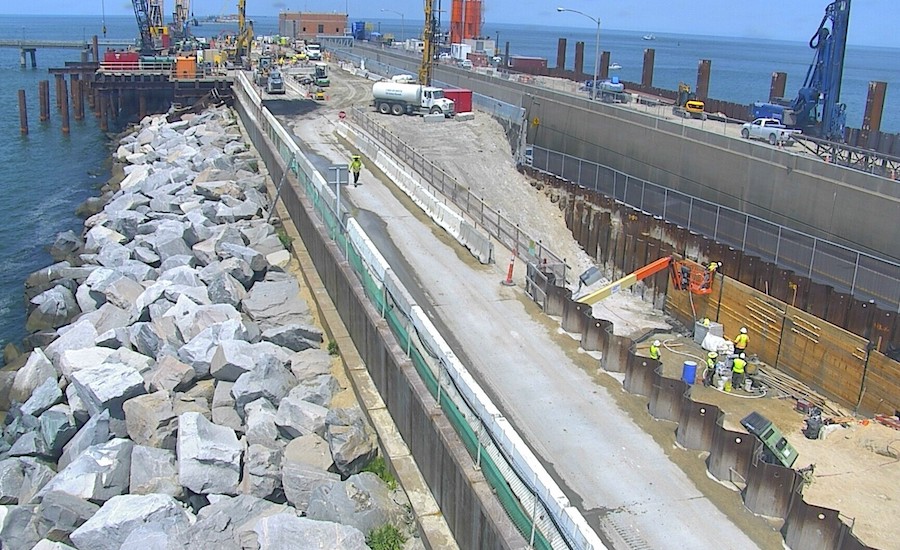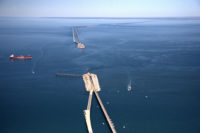Big boulders are causing big headaches for Virginia’s Chesapeake Bay Bridge-Tunnel expansion project, adding to other issues that have pushed the $756 million effort two years behind its original 2022 completion target.
Weighing as much as 25 tons, the granite boulders armor two 5.25-acre artificial islands where design-build the joint venture of Dragados USA, Inc. and Schiavone Construction Co. LLC are building a 5,700-ft long, 42-ft diameter tunnel to parallel existing tubes at Thimble Shoals Channel, approximately 3.5 miles offshore from Virginia Beach. Quarried during construction of the original 20-mile bridge-tunnel system in the 1960s, the boulders are being excavated as part of the construction of a launch pit for a tunnel boring machine (TBM), which is scheduled to arrive from Germany later this year.
According to the Chesapeake Bay Bridge and Tunnel District, the project owner, the boulders’ size and configuration have slowed Dragados-Schiavone’s efforts to drive shoring piles and create an opening for the TBM to begin its work without compromising the island’s structural integrity or vulnerability to a major weather event.
“The armor boulders are set around of a core made up of a wide variety of rock and filled with sand,” explains Mike Crist, the district’s deputy director of infrastructure. “So you have six- to eight-in stones all the way up to 4- to 6-foot diameter giants.”
As the process will have to be repeated at the other island, the district and contractors hope to identify a more viable alternative. Other ground improvement work on the islands continues, Crist says, including construction of a temporary dock to receive the TBM. He adds that casting of concrete interior tunnel segments is approximately 80% complete.
Construction of the new tunnel began in 2017, and is being funded through a combination of district funds, toll revenue bonds and federal and state transportation loans. Combined with permit delays and the joint venture’s dismissal of a geotechnical subcontractor Brasfond Group last year for non-performance, the boulder issues have forced the district to extend the original five-year schedule to 2024.
The district has stated in the past that the limited additional toll revenue anticipated from the expansion reduces the urgency to have the new tunnel open by a specific date. As such, liquidated damages in Dragados-Schiavone’s contract are structured mainly to cover district administrative and oversight costs in the event of delays. There is also no early completion incentive.





Post a comment to this article
Report Abusive Comment